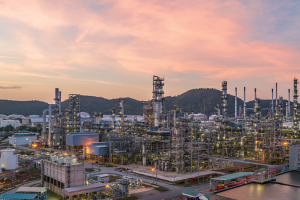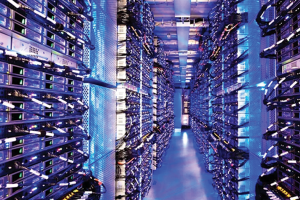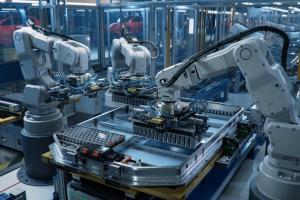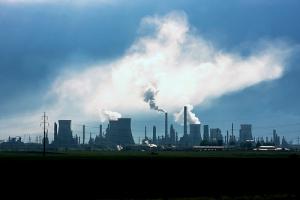
Crafting energy policy is a challenging balancing act. Even with the global and grassroots organizations across the globe pushing for cleaner fuels, bio-based fuels, and renewable energy. there are political, economic, environmental, and cultural realities that must be addressed. While leadership and a push for the future need to be provided, policy can't over-reach or there will not be enough general support (through the public or industry) and implementation will be difficult. If a policy is too much rooted in the status quo, then little will change or improve. I recently read a couple of stories that exemplified some of the diverse challenges and influences of this task.
Good intentions, but with what results?
The
International Maritime Organization, which is the U.N. shipping agency, has set a
2020 deadline to reduce the sulfur content of fuels used in the global fleet while at sea. The current industry standard, commonly called bunker fuel, is mainly cheaper residual fuel oil that remains at the "
bottom of the barrel" after all the more profitable fuels have been separated.
The current average sulfur content of bunker fuel is 2.7 percent, with the new 2020 standard set at 0.5 percent. By comparison, the typical limit for
sulfur in gasoline in the US is 30 parts per million (ppm), or 0.0003 percent. It is estimated that seaborne trade accounts for less than 10 percent of
global sulfur emissions from approximately 200 million tons of bunker fuel. But to replace this fuel by the most direct route is to move upstream and use cleaner fuels, such as the middle distillates used for other transportation, including airplanes, automobiles, and power plants. This would add even more demand to a series of products already seeing tremendous growth as demand for cleaner vehicles increases.
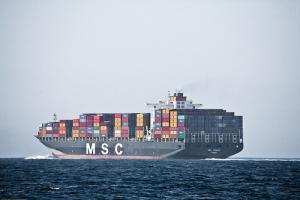
Estimates are that for all the bunker fuel demand to be replaced from these middle distillates, the global refining industry would require an investment of $150 billion. Some refiners are making the investment, but far from the industry-wide investment that would be required to meet the projected demand.
The conundrum now is how would the shippers meet this goal if there are not enough refiners producing cleaner fuel? What kind of incentives could be offered to the refiners to make this enormous investment for a low-profitability fuel? There is likely no single solution, as seems to be the case for many energy solutions. Exhaust scrubbing technology has been proposed, but again the cost of investment and timeliness of implementation are significant hurdles, though this would shift the cost of investment from the refiners to shippers. Alternative fuels, such as liquefied natural gas or biofuels, could help improve availability, plus the work required to retrofit the ships make this a small part of the solution. When the fuel of choice is selected by lowest price (as is the case with many "dirty" fuels), the economics present some difficult choices.
How far should the government go?
In another story, economics and other conditions drive the conversation in a different direction. The government in
Seoul, South Korea, mandated, as of January 24, a
maximum temperature of approximately 68 degree Fahrenheit for buildings and stores with large energy consumption. There are many factors in Korea that have a multiplier effect in encouraging conservative energy use. The city has been experiencing an unusually cold winter, pushing demand on the electrical grid to the upper limit of its capacity. Given that oil prices have recently risen and that Korea
imports almost all its energy, energy is a significant concern on the peninsula.

There are also other conservation polices in place, such as requiring that many electronic stores turn off most of their display TVs. The government also has plans to replace incandescent light bulbs in traditional markets with LED lights. To address gasoline demand, the government will be increasing subway line frequency by 1 to 3 minutes from 10AM to 12PM.
The thermostat policy is actually a revision of a successful policy from the summer, when air conditioning use was pushing demand on the
grid. A minimum temperature was set at the same selection of buildings, and impending blackouts were avoided.
What would you say to a government mandated thermostat setting, even if it was in the interest of national security? What is the best level to initiate energy policy from? Grassroots, municipal, regional, national, international? Is the answer to lead by example as
President Carter tried?
 Crafting energy policy is a challenging balancing act. Even with the global and grassroots organizations across the globe pushing for cleaner fuels, bio-based fuels, and renewable energy. there are political, economic, environmental, and cultural realities that must be addressed. While leadership and a push for the future need to be provided, policy can't over-reach or there will not be enough general support (through the public or industry) and implementation will be difficult. If a policy is too much rooted in the status quo, then little will change or improve. I recently read a couple of stories that exemplified some of the diverse challenges and influences of this task.
Crafting energy policy is a challenging balancing act. Even with the global and grassroots organizations across the globe pushing for cleaner fuels, bio-based fuels, and renewable energy. there are political, economic, environmental, and cultural realities that must be addressed. While leadership and a push for the future need to be provided, policy can't over-reach or there will not be enough general support (through the public or industry) and implementation will be difficult. If a policy is too much rooted in the status quo, then little will change or improve. I recently read a couple of stories that exemplified some of the diverse challenges and influences of this task.
 Estimates are that for all the bunker fuel demand to be replaced from these middle distillates, the global refining industry would require an investment of $150 billion. Some refiners are making the investment, but far from the industry-wide investment that would be required to meet the projected demand.
The conundrum now is how would the shippers meet this goal if there are not enough refiners producing cleaner fuel? What kind of incentives could be offered to the refiners to make this enormous investment for a low-profitability fuel? There is likely no single solution, as seems to be the case for many energy solutions. Exhaust scrubbing technology has been proposed, but again the cost of investment and timeliness of implementation are significant hurdles, though this would shift the cost of investment from the refiners to shippers. Alternative fuels, such as liquefied natural gas or biofuels, could help improve availability, plus the work required to retrofit the ships make this a small part of the solution. When the fuel of choice is selected by lowest price (as is the case with many "dirty" fuels), the economics present some difficult choices.
Estimates are that for all the bunker fuel demand to be replaced from these middle distillates, the global refining industry would require an investment of $150 billion. Some refiners are making the investment, but far from the industry-wide investment that would be required to meet the projected demand.
The conundrum now is how would the shippers meet this goal if there are not enough refiners producing cleaner fuel? What kind of incentives could be offered to the refiners to make this enormous investment for a low-profitability fuel? There is likely no single solution, as seems to be the case for many energy solutions. Exhaust scrubbing technology has been proposed, but again the cost of investment and timeliness of implementation are significant hurdles, though this would shift the cost of investment from the refiners to shippers. Alternative fuels, such as liquefied natural gas or biofuels, could help improve availability, plus the work required to retrofit the ships make this a small part of the solution. When the fuel of choice is selected by lowest price (as is the case with many "dirty" fuels), the economics present some difficult choices.
 There are also other conservation polices in place, such as requiring that many electronic stores turn off most of their display TVs. The government also has plans to replace incandescent light bulbs in traditional markets with LED lights. To address gasoline demand, the government will be increasing subway line frequency by 1 to 3 minutes from 10AM to 12PM.
The thermostat policy is actually a revision of a successful policy from the summer, when air conditioning use was pushing demand on the grid. A minimum temperature was set at the same selection of buildings, and impending blackouts were avoided.
What would you say to a government mandated thermostat setting, even if it was in the interest of national security? What is the best level to initiate energy policy from? Grassroots, municipal, regional, national, international? Is the answer to lead by example as President Carter tried?
There are also other conservation polices in place, such as requiring that many electronic stores turn off most of their display TVs. The government also has plans to replace incandescent light bulbs in traditional markets with LED lights. To address gasoline demand, the government will be increasing subway line frequency by 1 to 3 minutes from 10AM to 12PM.
The thermostat policy is actually a revision of a successful policy from the summer, when air conditioning use was pushing demand on the grid. A minimum temperature was set at the same selection of buildings, and impending blackouts were avoided.
What would you say to a government mandated thermostat setting, even if it was in the interest of national security? What is the best level to initiate energy policy from? Grassroots, municipal, regional, national, international? Is the answer to lead by example as President Carter tried?


